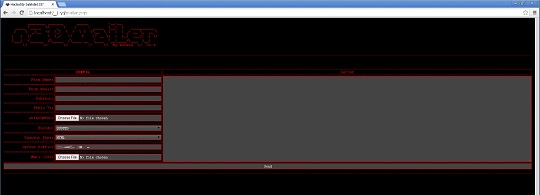Trojan.PHP.MAILER.C
Windows


Threat Type: Trojan
Destructiveness: No
Encrypted: No
In the wild: Yes
OVERVIEW
This Trojan arrives on a system as a file dropped by other malware or as a file downloaded unknowingly by users when visiting malicious sites.
It does not have any propagation routine.
It does not have any backdoor routine.
However, as of this writing, the said sites are inaccessible.
TECHNICAL DETAILS
Arrival Details
This Trojan arrives on a system as a file dropped by other malware or as a file downloaded unknowingly by users when visiting malicious sites.
Propagation
This Trojan does not have any propagation routine.
Backdoor Routine
This Trojan does not have any backdoor routine.
Rootkit Capabilities
This Trojan does not have rootkit capabilities.
Dropping Routine
This Trojan drops the following files:
- {Malware File Path}\out.php → contains list of email addresses to where the created email was sent
Information Theft
This Trojan gathers the following data:
- Web form data
- Client IP address
- Client hostname
- Server name
Other Details
This Trojan does the following:
- It enables its user to create and send an e-mail to target e-mail addresses using PHP library.
- It uses the following web form to input custom information for e-mail creation purpose:

- It connects to the following URLs to identify the server's IP address's location:
- http://{BLOCKED}geo.com/api/index.php
- It sends the gathered information to a specific email address.
However, as of this writing, the said sites are inaccessible.
It does not exploit any vulnerability.
It requires being hosted on a web server in order to proceed with its intended routine.
SOLUTION
Step 1
Before doing any scans, Windows 7, Windows 8, Windows 8.1, and Windows 10 users must disable System Restore to allow full scanning of their computers.
Step 2
Search and delete this file
- {Malware File Path}\out.php
Step 3
Scan your computer with your Trend Micro product to delete files detected as Trojan.PHP.MAILER.C. If the detected files have already been cleaned, deleted, or quarantined by your Trend Micro product, no further step is required. You may opt to simply delete the quarantined files. Please check the following Trend Micro Support pages for more information:
Did this description help? Tell us how we did.


